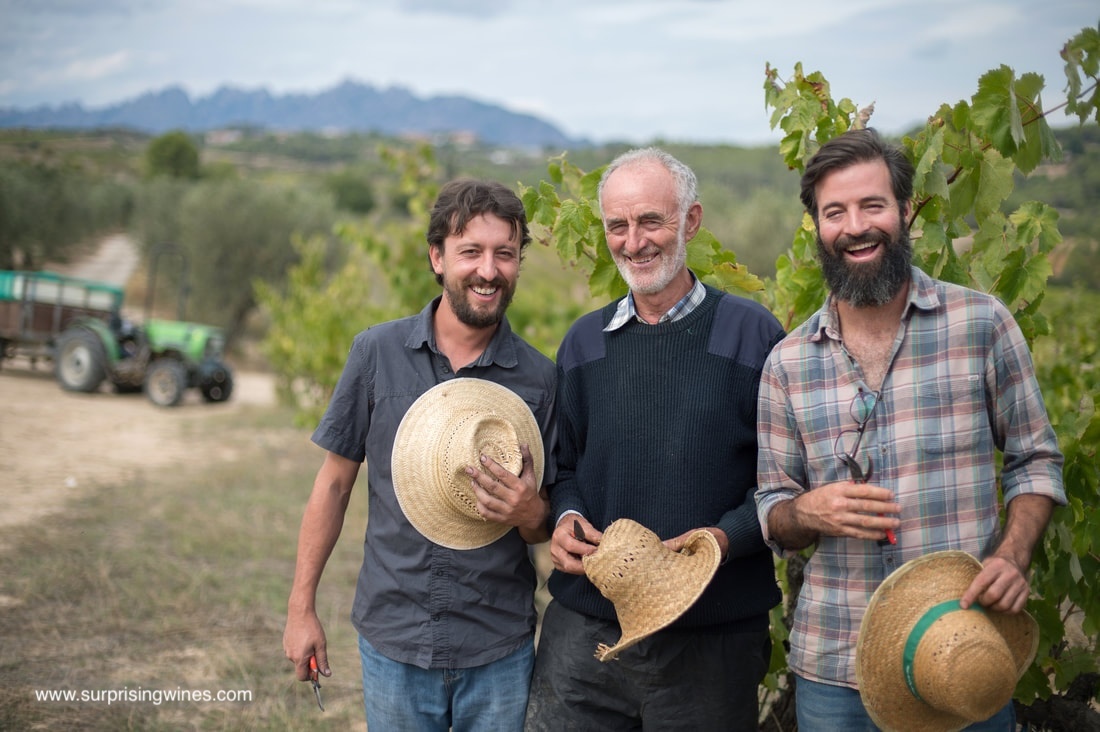
This month’s club features an adventurous, natural Spanish red from Penedès, and a serious-but-approachable rosé of Pinot Noir from a small producer in Menetou-Salon. Irene wrote up the Spanish wine and Andrea wrote up the rosé. We think you’ll enjoy the journey!
Happy sipping!
Irene's notes on Finca Parera
Penedes in northeastern Spain was recognized in 1960 as the first DO (Denomination of Origen) of Catalunya (Catalonia). Extending from the Mediterranean coast just south of Barcelona west through the inland mountains (Montserrati) where vines here grow on land that is diverse in microclimates and produce a range of wine styles within its overall warm mediterranean climate.
Broadly, Penedès is divided into three zones:
Penedés Maritim runs from the sea through the coastal mountain range
Penedès Central stretches across the elevated plains (up to 500m) between the coastal range and the inland monserrati
Penedès Superior covers the inland mountains from Montserrat to the Montmell at altitudes from 500-800m.

Of course there is plenty of wine history here (this is Spain, after all) starting with evidence of ritualistic consumption of wine by elites during the Iberian period. Additionally, excavations at the Font de la Canya site in Avinyonet del Penedès unearthed carbonized and mineralized seeds from the 7th century BCE indicating it was likely Phoenicians who brought wine to the region originally.
During the Roman period of the 2nd century BCE wine consumption was universal. Many farmhouses of that period included wine production and cellaring areas. During the Middle Ages (after the Romans) the church stepped in to uphold production until vineyard planting slowly re-emerged during the period of repopulation over the 8th-15th centuries CE. It’s been pretty much nothing but progress in Penedès ever since.
Finca Parera, this month’s Penedès producer, was established in 1999 when Jordi Parera and his son Ruben Parera, began making wine at a small farm winery in the town El Papiol near Sant Llorenç d'Hortons in the Penedès Montserratí. Today their winery is in the town of San Juan Samora where they make wine using natural vinification methods from the various vineyard sites they have amassed over twenty years.
Their vineyards are farmed using biodynamic practices including the cultivation of crops in addition to grapes (fruit orchard, cereals, olives not only for their production but also to provide secure purchase for pollinators and beneficial insects); the keeping of bees and livestock; growth of cover crops between vine rows; introduction of natural compounds in lieu of any chemical interventions in the vineyard. Their vineyards are certified biodynamic by Demeter.

Finca Parera Fosc 2022
This is a blend of 40% Sumoll, a nearly extinct variety indigenous to this region, as well as Tempranillo (here known as Ull de Liebre) Granatxa Negra, Monastrell, and Syrah. All are grown at 237m on the calcareous clay soils of the Parera 10ha estate. The vineyards are worked using biodynamic practices and are certified biodynamic by Demeter.
Grapes are harvested by hand to ensure ideal ripeness and then placed in 250kg harvest crates for transportation to the winery in pristine condition. Making use of small crates reduces the incidence of crushed grapes toward the bottom of the crate prior to reaching the winery which can result in unwanted oxidation among other issues.
Once the fruit reaches the winery grape varieties are handled separately. Each variety is destemmed (stems are discarded), and NOT crushed before being put into tank for a few days of maceration. This process is called whole berry fermentation or semi-carbonic fermentation. The berries in tank will rest in three ‘environments.’ At the top the berries will be intact, in the middle berries will be in contact with the juice from the berries below which, having been crushed by the weight of the fruit above, will have released their juice. The berries on top are subject to intracellular fermentation, a chemical process, that results in a small degree of ethanol production and some color transfer from the skin to the pulp prior to the skin bursting open, releasing its juice.

Since the ideal temperature for intracellular fermentation is about 30C the lower tank will begin to ferment via ambient yeast in short order. After a few days the tank temperature is reduced for a long, cool natural yeast fermentation. The goal of this process is to produce red wine of modest extraction and tannin with vibrant primary fruit character.
When the fermentation is complete, and the wine is dry, individually fermented varieties are drained away from their skins. The skins are pressed and that volume of juice is used for other purposes while the ‘free run’ wines are blended together. This blend is placed in cement tank until the spring to naturally clarify prior to bottling without fining or filtration or the addition of SO2 (when the moon is waning).
Fosc 2022 has a cloudy appearance with a medium purple/ruby color and a pale pink rim. Aromas and flavors of plum skin, blackberry, and crushed strawberry along with red apple skins, graphite, dried leaf and the bloom of a dried saussicon. A nice level of acidity moves all of these flavors across the palate while a pleasing level of smooth tannins to ensure length. Drink this wine after a bit of a chill with salumi and cheese; with any old paella you might be cooking up or with a mixed grill of sausages, chicken and veg.
###
Well that's a tough act to follow, but here are Andrea’s notes and photos on Chavet:
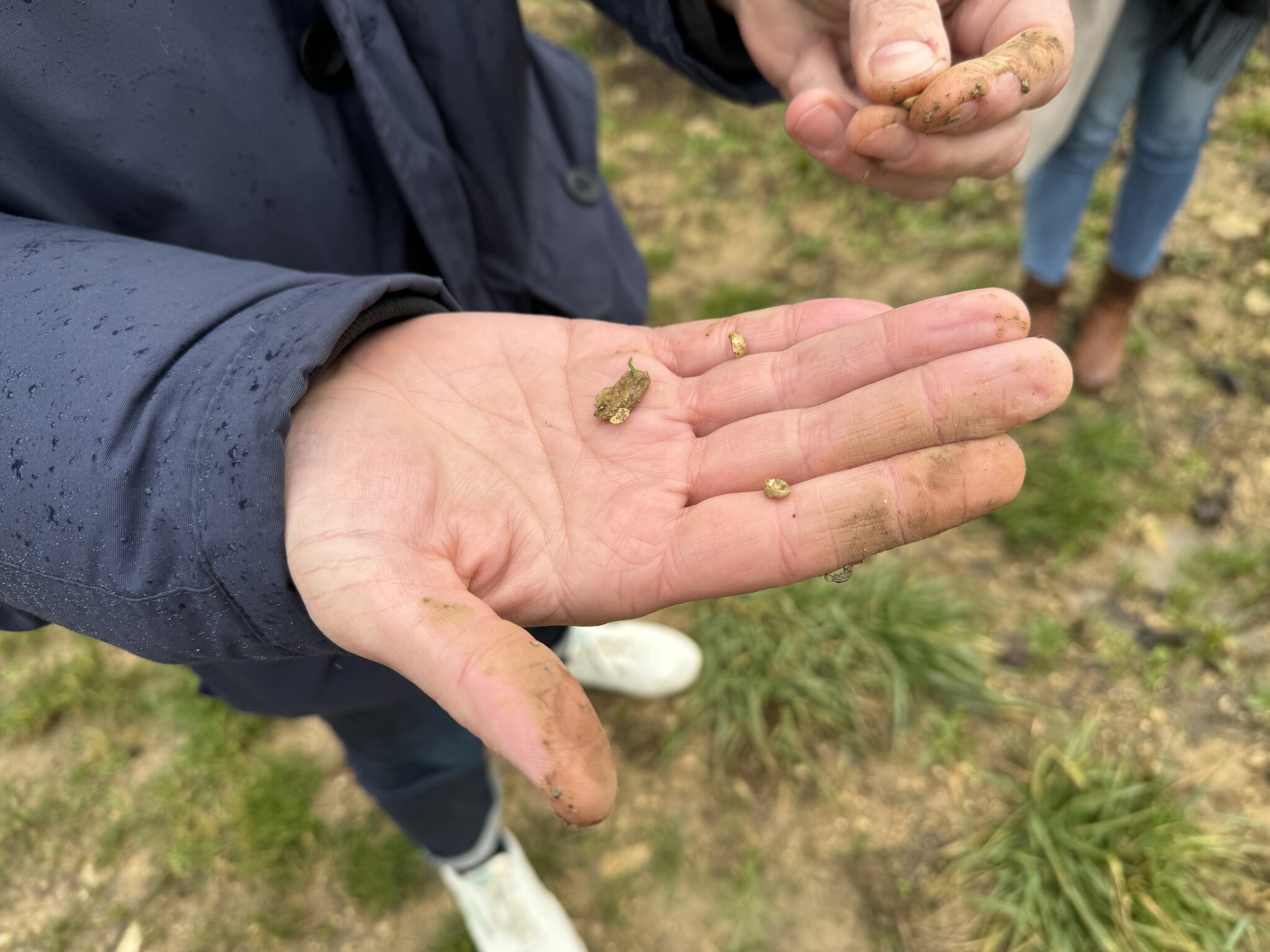
Domaine Chavet Menetou-Salon Rosé Les Cent Neuf Rangs 2023 $24.99
Menetou-Salon is a commune and appellation in the Cher department of France’s central Loire Valley, just west of Sancerre, its much larger and more famous neighbor. It shares similar soils with Sancerre, mainly limestone and rendzina (humus rich with soft calcareous marl or chalk) but its vineyards, of which there are around 600 hectares, are flatter and less compact, giving Sancerre the edge on mesoclimate (that which is specific to a restricted geographic place). Like in Sancerre, the main grape here is the white Sauvignon Blanc, which is responsible for 60% of the production. Pinot Noir makes up the rest in the form of red and rosé. Sauvignon Blanc grown here is capable of making wines that rival Sancerre but at a much friendlier price. Pinots tend to make lighter-style, aromatic reds and pinks, mostly (but not always) for earlier consumption––also similar to Sancerre.
The cultivation of vines here can be traced back to the 11th century when the land was owned and controlled by noblemen, the Seigneurie (Lordship) of Menetou-Salon; historical records dating to 1063 show the donation of many hectares of land and vines by the seigneurie to the church. Anything in the pursuit of saving one’s soul…hope it worked! Or not, considering the general exploitative history of noblemen. In any event, the gift of the Clos de Davet to the Abbaye Saint-Sulpice de Bourges is one such example of this extreme tithing for salvation or favor; another was the donation of land and vines in 1190 to the Abbaye de Loroy by Hugues de Vèvre.
The Chavet family has been growing vines in Menetou-Salon since the 17th century, and the estate now spreads over 23 hectares, with additional holdings in Pouilly-Fumé and Quincy. Antoine de la Farge is the current generation in charge. Antoine was greatly influenced by his grandfather, Gerard Clément, who was one of the most respected winemakers in the region and one of the founders of the appellation.
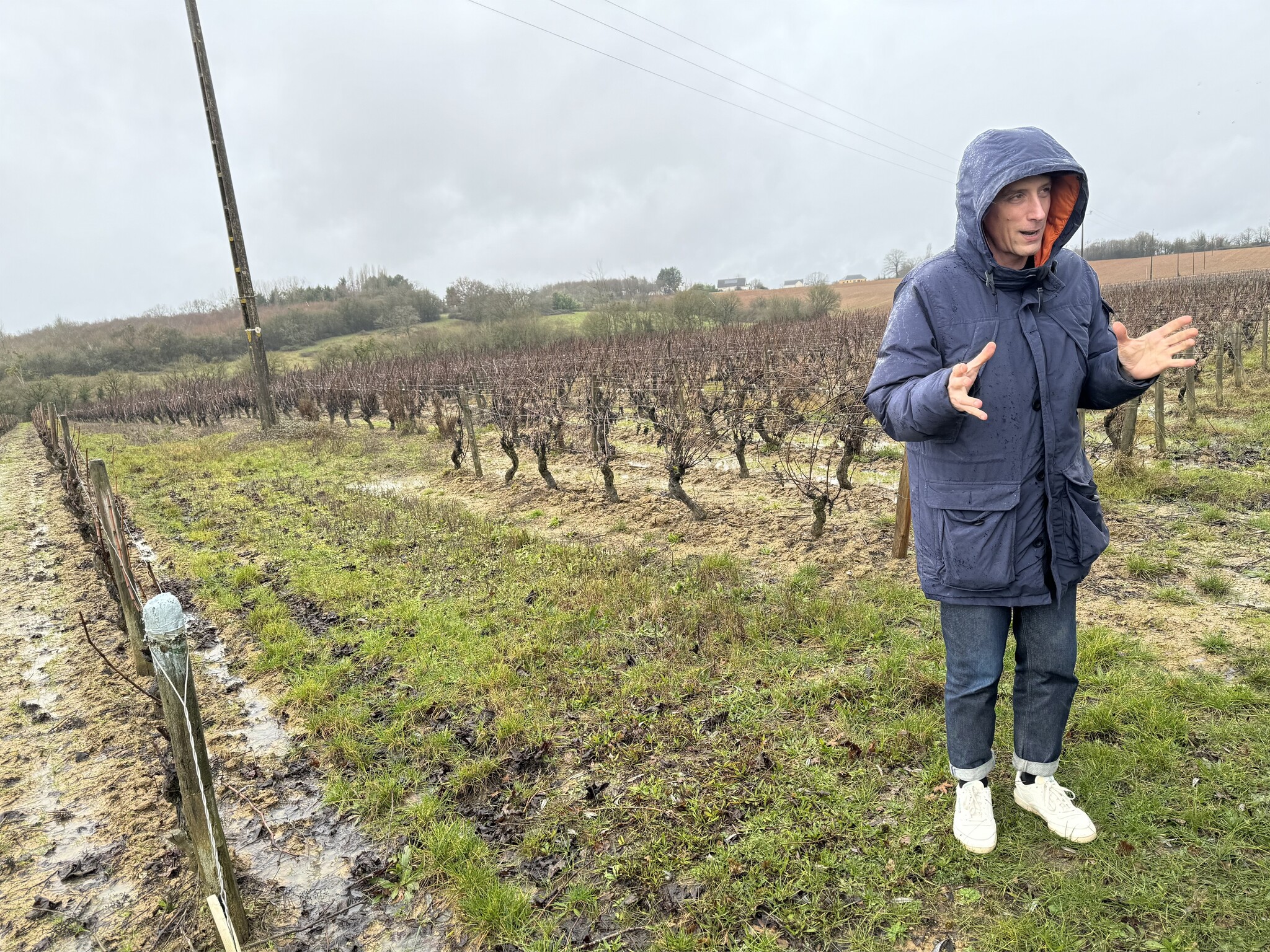
Antoine started his career in a wine shop then later became a wine buyer for one of France’s largest wine merchants. He spent 12 years gaining experience as a winemaker, some of that time spent in Australia. He returned to the family domaine in 2012. As winemaker Antoine is a great believer in the importance of place. Chavet was another producer visited on that wine trip back in January. Antoine was a gracious host, clearly in love with what he does and with the land that is placed in his trust. In the vineyards, in the cold and rain, he enthusiastically showed us tiny fossilized oysters known as Exogyra Virgula, often referred to as oreilles de poules (chicken’s ears) by the locals. As he crumbled rocks revealing more and more of these ancient critters, he mused to us, and, seemingly to the universe, “how much more do we need to see to know that on this earth we are nothing?” Right on, Antoine. We liked this guy.

Antoine further says, “A winegrower does not inherit the vineyard, he or she is its guardian for future generations. It is in this spirit, and with the belief that in order to obtain a great wine it is necessary to accompany and preserve nature, that the estate has, since 2002, had Terra Vitis certification, a label that certifies that the wine is produced using sustainable viticulture techniques. Biodiversity is our priority in the vineyard. This is why we no longer use weedkillers and favor the use of grass cover and soil management techniques. In the cellar, we accompany the natural transformation of the grapes with extreme gentleness, limiting our interventions to the strict minimum, according to the daily tastings. All our wines are aged––from 6 months in vats to 18 months in amphorae and barrels––in order to reveal the depth and essence of our great terroir.”
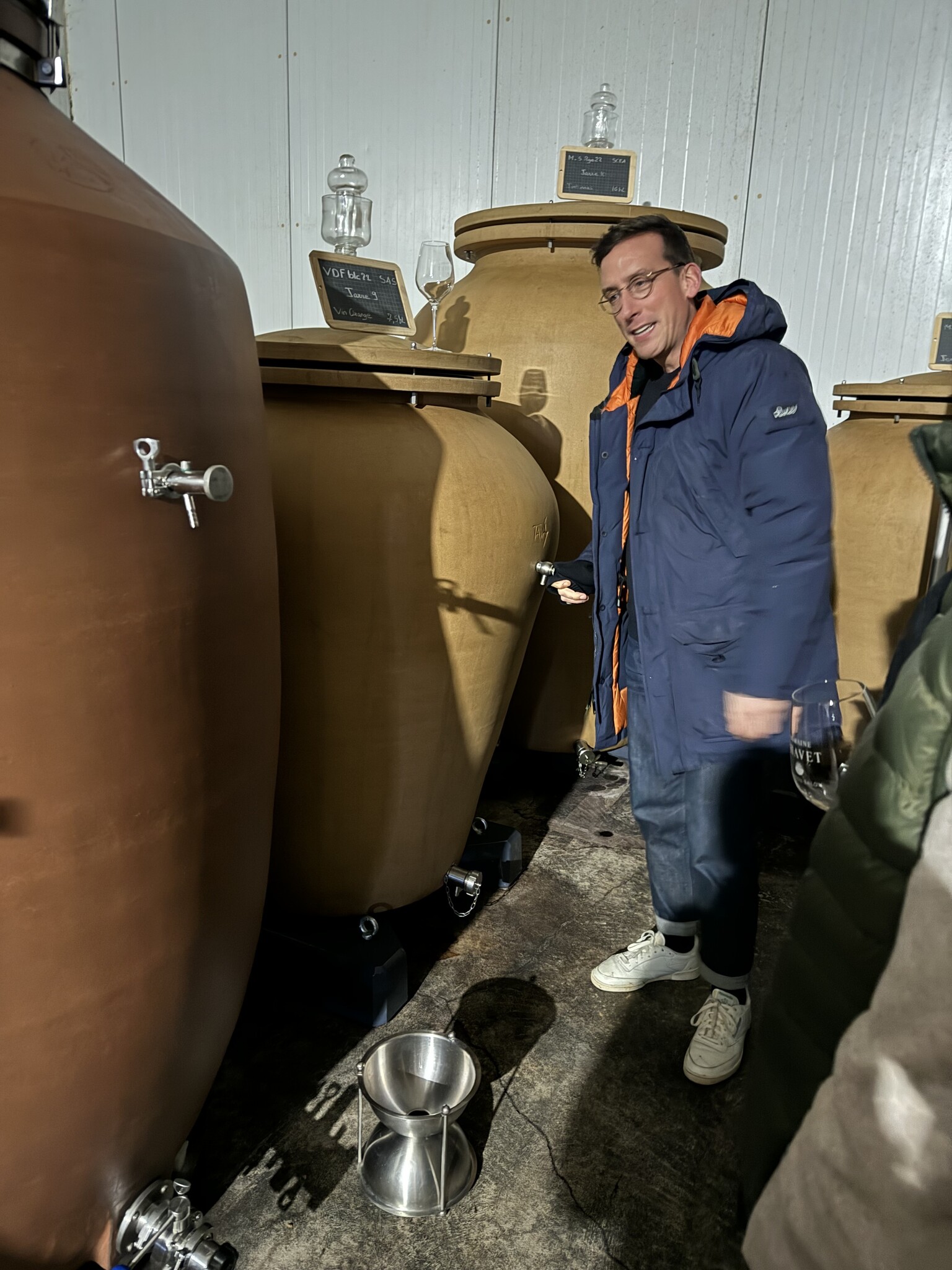
2023 in the Loire presented numerous viticultural challenges. A mild winter led to early bud-set, and that always makes the risk of frost an anxiety inducing nightmare. A dry spring became rainy towards the end of June which increased the chances for mildew. Many producers required significant green harvesting to thwart this threat, thereby reducing yields. Harvest conditions were also wet, and warm too, which sounds rather unpleasant. But! The wines are overall airy and fresh––sunny even––with modest alcohol levels and generous concentration of flavors.
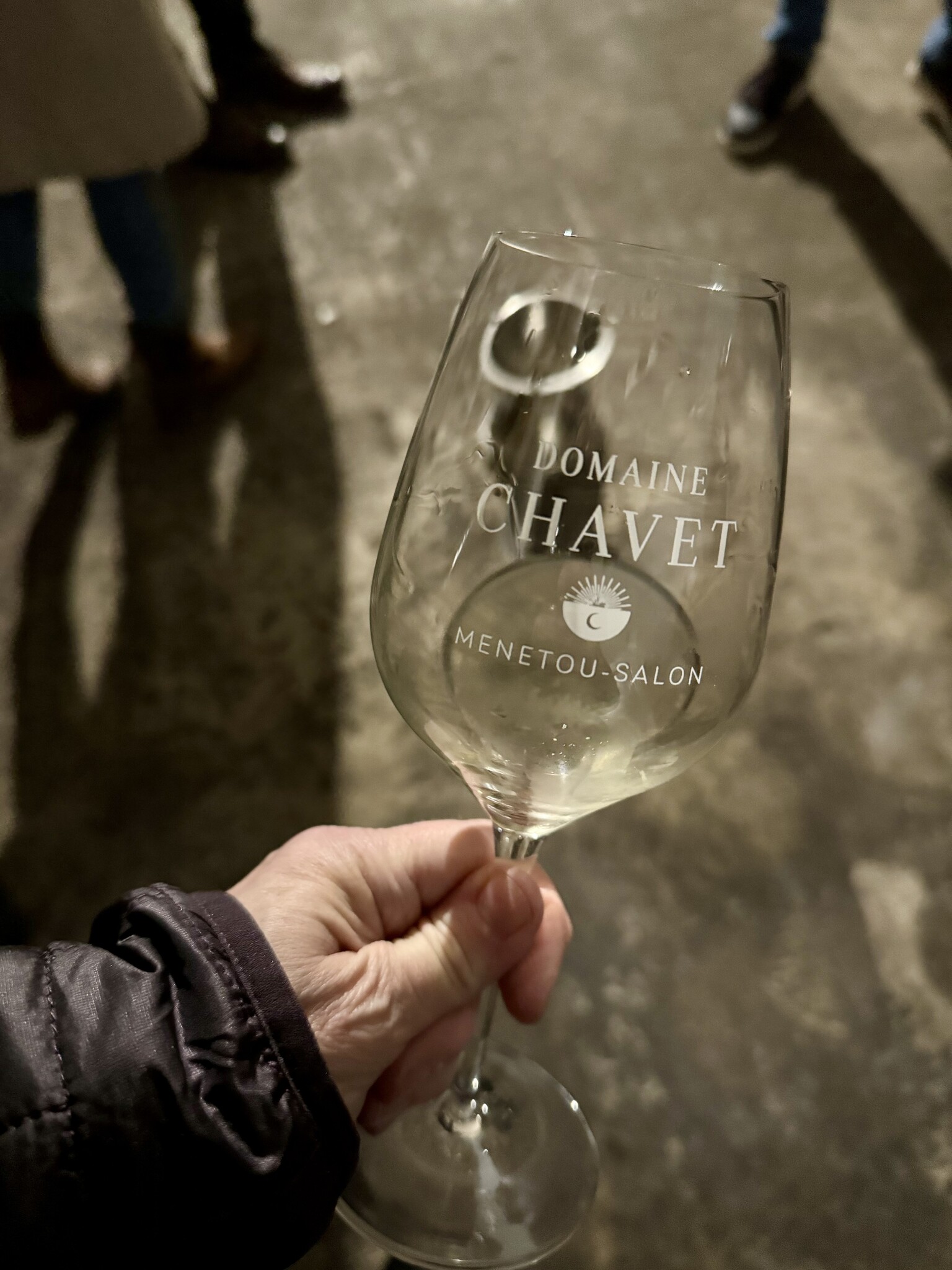
Les Cent Neuf Rangs rosé is 100% Pinot Noir from a single vineyard of 109 rows. Hand-harvested, gravity-fed, no added yeasts. Ten percent of the wine spent six months in barrel, the rest in stainless steel. No malo. On the nose there’s a lot of fruit––from strawberry, to plum, to peach, to watermelon. The texture hints at richness right up front but quickly turns to brisk minerality and litheness. As it opens up the red fruit mingles with green garden herbs, red bell pepper, and a light spiciness and herbaceous-ness emerges on the finish. Antoine suggests that this is a wine that needs some time, and that it might show itself best in two to three years. With that in mind, it wouldn’t be a bad idea to decant, and to not serve it too cold, as the cold will mute its expressiveness and subtleties. So pull it out of the ice bucket before a deep-freeze and serve with seafood like simple white fish poached in butter or olive oil, perhaps with some tarragon. Of course fresh goat cheese from the Loire would be a good choice. And grilled shrimp with avocado, fresh olive oil, and a squeeze of lemon would do the trick too. Make it yourself, or order it to go from Al Forno!
Members receive a 10% discount on regularly priced wines, regardless of whether or not the wines are part of a club pack. This discount does not apply to sale items, blue-tag wines, or boxes/cans/alternative packaging and cannot be added to any other discount or promotion. The discount is good on wine only, and is active for the duration of the club membership. As of now it can only be used in-store or over the phone; it will not work online. Twelve bottle case discount remains 12%.
